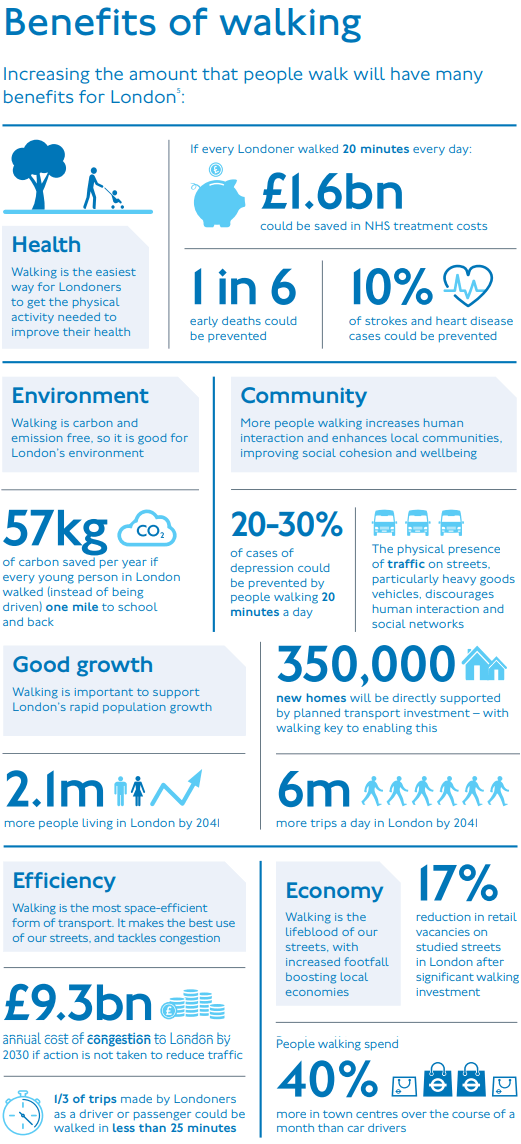- London’s first Walking Action Plan targets an extra million walking trips a day
- Streets will be designed, built and managed to support people walking with new infrastructure, better signposting and maps, and more pedestrian crossings
- Walking helps connect communities, boost local businesses, improve health and wellbeing and reduce road danger, air pollution and noise
London’s first ever walking and cycling commissioner, Will Norman, has unveiled the capital’s first Walking Action Plan. It sets out how London will become a city where walking, for those that can, is the most obvious, enjoyable and attractive means of travel for all short trips.
The plan, which is supported by Public Health England (PHE), has an ambitious vision to make London the most walkable city in the world, with a million extra walking trips taking place each day by 2024*.
The Mayor of London wants to increase the proportion of people walking, cycling and taking public transport to 80 per cent of journeys by 2041, from 63 per cent now. And the Mayor is investing a record £2.2bn in streets across London to make them better for walking and cycling, and improve air quality.
Walking is an easy and affordable way for Londoners to integrate more physical activity into their daily lives. However, research shows that too many people are put off because of concerns about road danger or worries about their levels of physical fitness.
The benefits of walking
Greater London Authority research has shown that if every Londoner walked or cycled for 20 minutes a day, it would save the NHS £1.7bn in treatment costs over the next 25 years.
This includes 85,000 fewer people being treated for hip fractures, 19,200 fewer people suffering from dementia, and an estimated 18,800 fewer Londoners suffering from depression.
It is the ambition of the Mayor that Londoners walk or cycle for at least 20 minutes every day – currently only 34 per cent of Londoners manage to do this on any given day.

The Walking Action Plan aims to help Londoners overcome these barriers by:
- Designing, building and managing streets for people walking, by delivering better public spaces, more walking routes and more numerous and wider pedestrian crossings
- Ensuring that walking is prioritised in every new infrastructure scheme, through London’s first ever pedestrian design guidance and a range of other tools and analysis to support boroughs to deliver local schemes
- Enabling thousands more children to walk to school by doubling the number of Gold accredited STARS schools which champion healthy routes to school, and by supporting timed road closures, car free days and 20mph speed limits around schools
- Rolling out innovative new traffic signal technology that makes it safer and easier for pedestrians to cross roads, while minimising congestion
- Creating new ‘Active Travel Hubs’ at London Underground stations, making it easier to walk as part of an onward journey
Links
London set to become the world’s most walkable city (Mayor of London press release)
Mayor's Transport Strategy: Walking Action Plan
City needs to be walker-friendly (London Living Streets)



